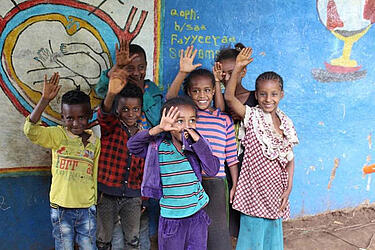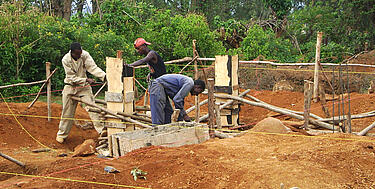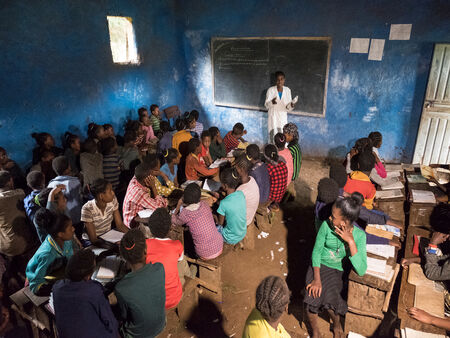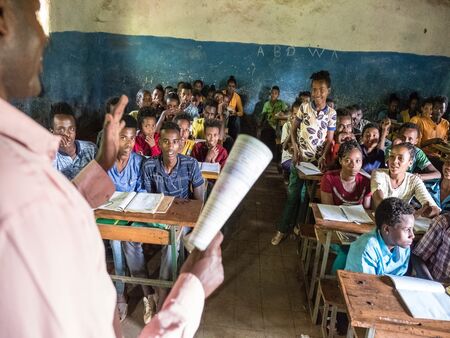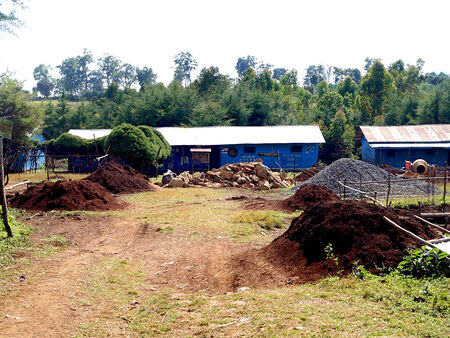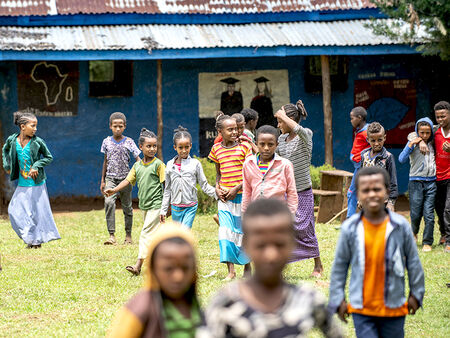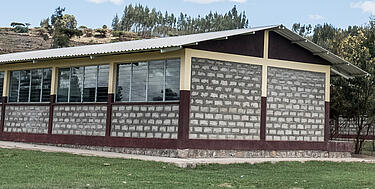A new school for Kekero Jibat:
a village looks to the future
Dear readers, Bhuebos bona! Hello and welcome to Kekero Jibat. Today, the grandmothers are cooking, people have got out their most colourful clothes, and everyone is excited about the evening’s festivities. After all, building is about to begin on the Kekero Jibat Primary High School, and that calls for a celebration!
Construction of the new school is being financed by Dallmayr. From now on, we’ll be reporting from the school with Gamachu (12), Helina (6) and Urge (7). Together with more than 700 other children, the three pupils currently attend the old school in the village, around 200 km south-west of Addis Ababa.
The building was originally constructed using straw, wood and clay. It has small openings for windows, and large parts of the walls are crumbling after being infested by termites.
The new school, which will be built in partnership with the “Menschen für Menschen” foundation, aims to give families a better future. This matter is very close to Dallmayr’s heart. After all, coffee has been grown in Ethiopia for decades, and Dallmayr has been in contact with families there for several generations.

